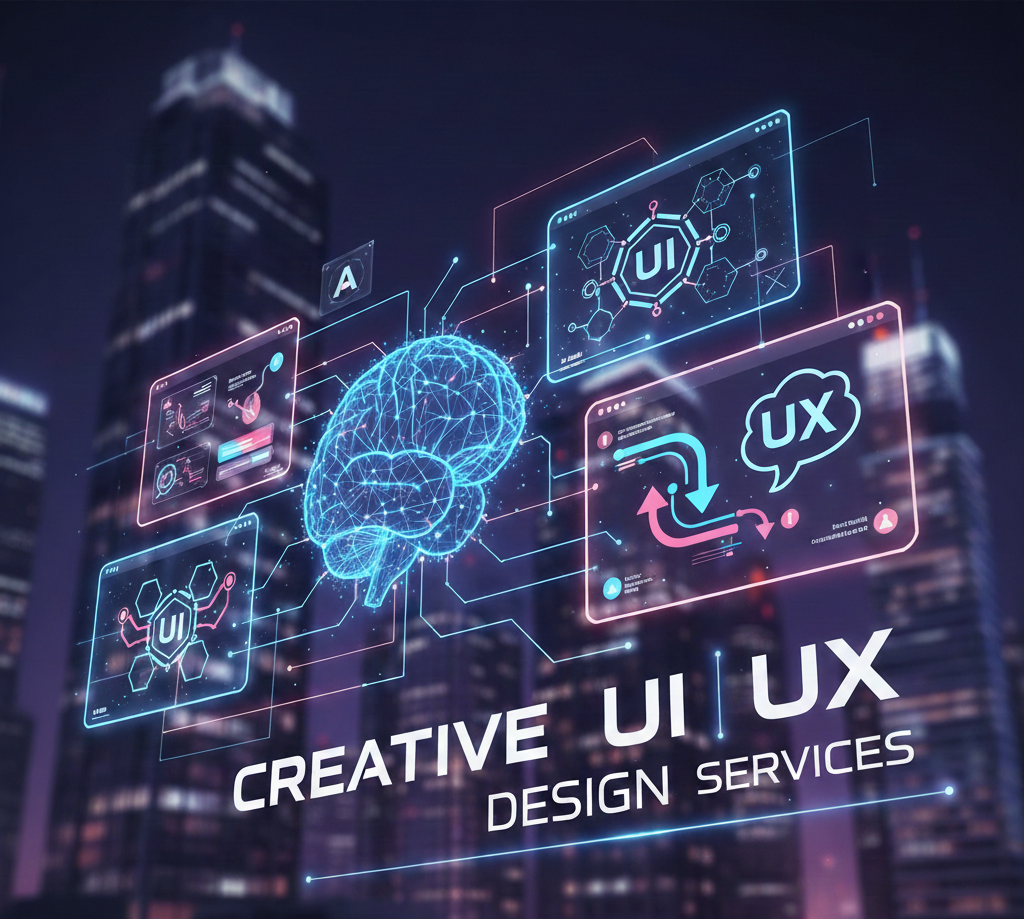Artificial Intelligence is rapidly transforming digital experiences at an unprecedented speed. What was once limited to automation and basic personalization is now evolving into intelligent, human-like interactions that understand user intent, emotions, and behavior. As we move into 2026, AI isn’t just influencing UX design; it’s redefining it entirely.
Interfaces are shifting from reactive systems that wait for user input to predictive systems that anticipate actions before they happen. Every forward-thinking UI UX Design Agency in Bangalore is preparing businesses to welcome this era of smart, intuitive, and self-evolving digital experiences.
Below are the five most powerful AI-driven UX trends that will shape the future of digital interfaces in 2026.
1. Predictive UX for Effortless User Journeys
Predictive UX is becoming the new standard for frictionless user experiences. AI analyzes interaction patterns, user intent, browsing history, and contextual data to forecast what a user is most likely to do next. Instead of forcing users to navigate multiple steps, predictive UX reduces unnecessary clicks and cognitive effort.
Let’s expect to see interfaces that:
- Auto-suggest next steps based on behavior and intent
- Auto-fill forms and fields using contextual cues
- Trigger smart recommendations at ideal decision points
- Simplify workflows by predicting most-used features
- Personalize journeys without requiring user input
For users, the result ca n create magic, everything appears faster, smoother, and tailored to their needs. For brands, this translates into higher engagement, fewer drop-offs, and improved conversion rates.
2. Emotion-Aware UI That Responds Like a Human
AI is now capable of identifying emotional states through micro-interactions, cursor hesitation, voice tone, and facial expression, where they are permitted. In 2026, emotion-aware interfaces will begin adapting themselves in real time to match user mood and behavior.
These systems can detect:
- Frustration during long forms or confusing tasks
- Confusion while navigating unfamiliar features
- High engagement with certain content
- Positive sentiment after completing milestones
Based on these signals, the interface may:
- Offer guided assistance when frustration rises
- Simplify steps when confusion is detected
- Recommend relevant content when engagement peaks
- Trigger celebratory micro-animations to reinforce momentum
A leading UI UX Design Agency in Bangalore can already integrate emotion-responsive systems to create interfaces that feel empathetic, supportive, and deeply human.
3. Continuous UX Optimization Instead of Occasional Redesigns
Gone are the days when brands waited for quarterly or annual UX upgrades. AI allows continuous optimization by observing user interactions at scale and making real-time improvements.
Modern AI-driven UX systems automatically adjust:
- Layout blocks based on engagement heatmaps
- CTA positions for maximum visibility and clicks
- Spacing and alignment to enhance readability
- Micro-interactions and transitions for smoother flow
- On-page hierarchy depending on user priorities
This approach transforms UX from a static system into a living, evolving organism that improves every week. Startups and enterprises benefit from constantly increasing conversion rates without constant redesign costs.
4. Adaptive, Learning-Based Navigation Systems
Navigation is undergoing a major revolution. Instead of rigid menus, AI enables navigation structures that learn from user habits and adapt accordingly.
Adaptive navigation will:
- Reorder menus based on frequently accessed features
- Surface shortcuts for tasks the user performs often
- Hide or deprioritize irrelevant options
- Create personalized dashboards unique to each user
- Organize pathways dynamically as behavior changes
This removes complexity and transforms traditional navigation into an intuitive, self-optimizing experience. Users get to what they need almost instantly, boosting satisfaction and product stickiness.
5. Conversational UX as a Core Interaction Layer
In 2026, conversational interfaces, AI-powered voice and text will no longer be add-ons. They will become primary navigation tools across apps, websites, and digital ecosystems.
Conversational UX allows users to:
- Search using natural language
- Troubleshoot issues without external help
- Execute tasks instantly through prompts
- Navigate entire workflows via chat or voice
- Complete forms, bookings, and actions hands-free
With advancements in generative AI, these conversational layers will feel more like intelligent digital assistants than chatbots. For startups and enterprises alike, this is a major opportunity to reduce friction, enhance accessibility, and accelerate task completion.
Ready to Build Future-Ready AI UX?
To stay competitive in 2026 and beyond, brands need more than clean design. They need an intelligent, adaptive, AI-powered UX that evolves with users.
A specialized UI UX Design Agency in Bangalore, like Honeycomb, can help you integrate these AI trends into your website, app, or digital product.
Just go ahead and explore Honeycomb’s UI/UX capabilities: https://www.honeycombindia.net/
Future-ready UX starts today. Let AI elevate your product experiences.






